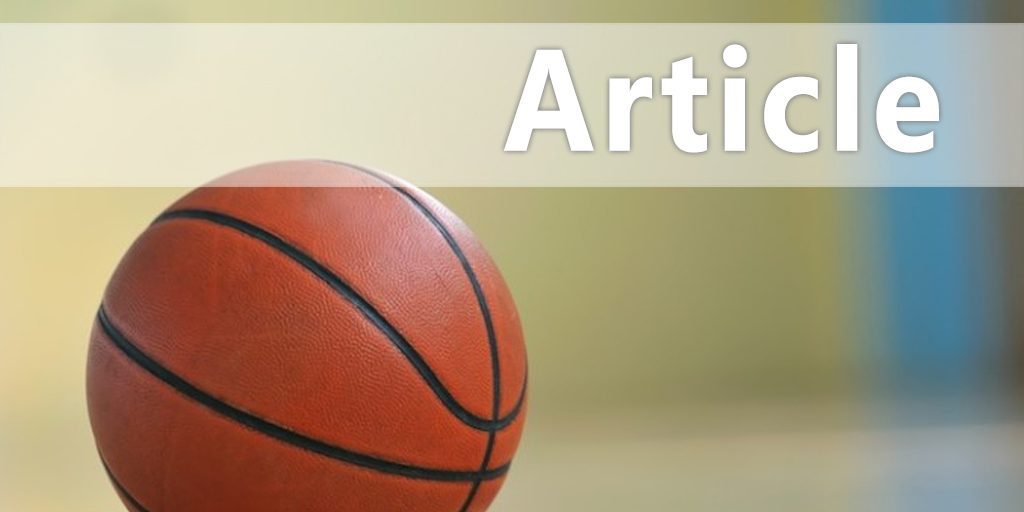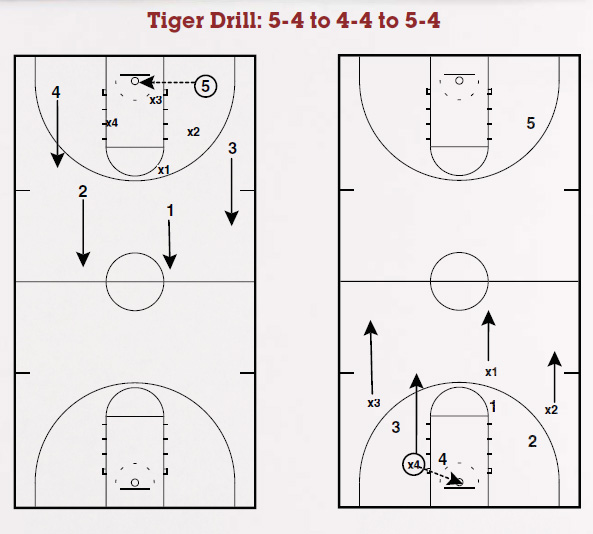| Defensive Recovery and Transition Drills |
| By: Pat Cunningham - Trinity (TX) University
Originally Published in: Time Out Magazine Provided by: NABC Getting your team defense executing the coned way starts with individual defensive fundamentals and then is built into team strategies. It is a process that needs to be worked on every day during your basketball practices. Also, by working on defense every day, your team will develop a defensive culture, and as your players start to master it, they will begin to enjoy playing defense. In addition to our two or three individual or three-man drills, we also do two team drills every day in practice. We feel that by taking the time to emphasize the principles in these drills, we can become more consistent in our defensive execution. Trinity University Defensive Recovery and Transition Drills The key defensive principles emphasized in the following drills are: 1. Communication (Talk & Point in Transition) 2. Always guard the ball 3. Force Offense to catch ball outside the Three-Point line 4. Always "jump to the ball" and establish "help" position (Protect the Basket) 5. Block Out and Rebound Tiger Drill: 5-4 To 4-4 To 5-4 This drill starts out in the half court with 5 vs. 4. We always start the ball in the back-court on a side of the floor so that the defense can easily recognize which side of the court the ball is on. Our rules are that somebody must always be guarding the ball and must communicate this with a verbal "BALL". Anybody on the "ball-side of the court" must be guarded and communicated to teammates who you are guarding. Anybody on the "help-side of the court" will be guarding multiple men and this must be communicated. This will be either one defensive man guarding two offensive men, or two defensive men guarding three offensive men (depending on the positioning of the offensive players). The only restrictions on the offensive team are that they must complete three passes before they can take a three- point shot or highly contested shot. We strongly encourage the offense to attack the defense via pass or dribble. As the ball is rotated and the offense attacks, the defense must constantly be adjusting their position and whom they are guarding. Communication is the key to successfully defending in this disadvantaged situation. In this drill, the last offensive person to touch the ball does not transition defense to four on four. This person will stay on their offensive end of the floor and immediately be back in play when his team gets the ball via steal, rebound, or outlet of made basket. His team then transitions to again attack five vs. four. We usually play these three possessions and then rotate from offense to defense. We will also play a "game" to "5" with the defense getting one point on any "stop" (turnover, steal, rebound).
Transition Drill: 4-3 to 5-4 to 5-5 This drill is designed to expose the defense and incorporate a variety of defensive situations as well. This drill starts in th half court with four vs. three, and the principles are the same as five vs. four only the defense is even more exposed. As shown in Diagram 3, there are two extra defensive players on the baseline ready to enter the drill when their team gains the ball. In addition, the starting offensive team has an extra player at the other baseline, ready to enter the drill when their team regains the ball after playing defense.
Pat Cunningham was named head coach at Trinity University in 1999 and has had great success guiding the Tigers. His 298 career wins are a program record and Trinity has earned nine NCAA Division III tournament berths with seven championships in the Southern Collegiate Athletic Conference. The Tigers reached the NCAA Division III Elite Eight in 2005 with a school-record 25 wins and Cunningham has been named conference coach of the year six times. He recently joined the NABC board of directors as a representative of NCAA Division III and received a NABC Guardians of the Game Award for advocacy in 2011. |










